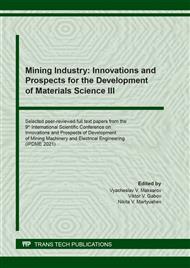p.3
p.13
p.21
p.28
p.41
p.48
p.54
p.60
Prospects of Using Hyperelastic Elastomer Materials in Vehicle Suspension Systems
Abstract:
The relevance of the use of elastic polymers (elastomers) in the structure of vehicle suspension is ensured by reducing the metal content, the unsprung mass and the overall dimensions of the elastic and damping suspension elements, and by increasing ride comfort and resistance to external factors. The aim of the study is to substantiate, theoretically and practically, the advantages of using elastomeric materials in terms of the quality of ride and the increase of the elastic and damping elements power intensity in comparison with standard designs. The comparative analysis of the parameters of standard structures and alternative ones allows us to make a conclusion the advantages of using elastomers in terms of increasing the power intensity of the elastic-damping suspension structure, reducing the values of the unsprung masses.
Info:
Periodical:
Pages:
28-37
Citation:
Online since:
February 2022
Authors:
Price:
Сopyright:
© 2022 Trans Tech Publications Ltd. All Rights Reserved
Share:
Citation:


